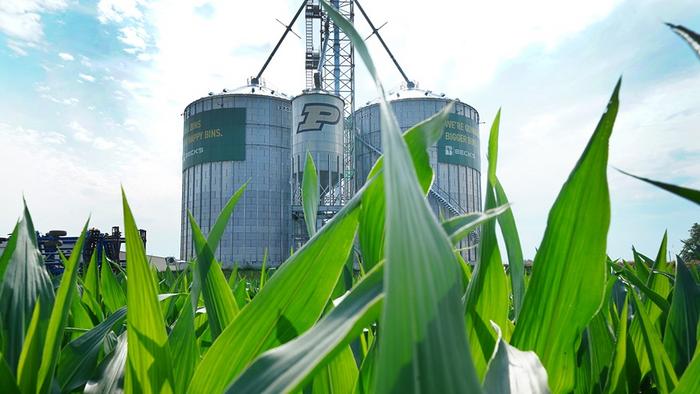
Nine grain dust explosions occurred in the United States in 2024, resulting in two injuries but fortunately no fatalities. According to an annual summary released by Purdue University, these incidents reflect a consistency with the previous year, which also recorded nine explosions but resulted in a higher injury count of twelve, emphasizing a concerning trend in the agricultural sector yet tempered by the lack of casualties. The figures align closely with the 10-year national average of 8.6 explosions, evidencing a relatively stable risk environment in grain handling operations across the country.
The explosions were identified as occurring in various facilities, including four feed mills, three grain elevators, a corn processing plant, and an ethanol plant. Such diversity in locations underscores the widespread vulnerability to dust explosions inherent within grain-related operations, highlighting that preventive strategies must be uniformly applied across the agricultural landscape. The identification of probable ignition sources was notably varied, with two cases linked to smoldering grain, two to equipment malfunction, and others attributed to welding and cutting work, while three ignition sources remained unknown.
Turning to the factors that contributed to these incidents, grain dust emerged as the primary fuel source, prompting six of the nine explosions recorded. Other contributing materials included smoldering grain and feed, pointing to the potential hazards present not only during grain storage but also processing. This serves as a stark reminder of the ongoing danger posed by stored grain and the necessity for vigilant oversight in grain handling and storage practices.
As authorities assess the risks present in grain facilities across the U.S., nine states reported a singular explosion each, including states notable for grain production such as Illinois, Iowa, and Nebraska. This geographical distribution indicates that all states involved must prioritize safety measures, as the potential for incidents exists across diverse agricultural backgrounds. In light of these events, experts emphasize the importance of proactive measures to diminish risks associated with grain dust explosions.
Kingsly Ambrose, a professor in agricultural and biological engineering at Purdue University, emphasized the significance of preventive maintenance within facilities to mitigate such risks. Ensuring all equipment is in good working condition before the onset of harvesting or grain handling seasons is critical. Specific risks, such as belt misalignment in bucket elevators, can generate excess friction and heat leading to dust ignition and subsequent explosions, illustrating a clear connection between equipment maintenance and explosion prevention.
Further emphasizing the importance of monitoring grain conditions post-harvest, Ambrose cautioned stakeholders to remain vigilant concerning grain storage environments. Poor aeration can result in fungal growth within grain bins, creating conditions conducive to smoldering, which can subsequently ignite dust particles in the surrounding air. This intersection of environmental management and explosion risk serves as a vital area of focus for those tasked with ensuring operational safety in agricultural settings.
The potential health hazards posed by accumulated grain dust extend beyond the examination of explosions. Ambrose elaborated that dust can have adverse effects on human health, leading to respiratory issues among workers. As such, facility housekeeping must be prioritized to ensure no settled dust or airborne particles exceed safety thresholds. Maintaining clean working conditions is crucial not only for preventing explosions but also for safeguarding employee well-being.
Following the summary of 2024’s incidents, it remains evident that vigilance in the agricultural community is paramount. Preventive measures and thorough inspections must become part of regular operational protocols to decrease both the frequency and severity of dust explosions. Incorporating advanced training for employees regarding the hazards associated with grain dust can foster a culture of safety, where awareness leads to enhanced prevention measures.
In the aftermath of these findings, there is a clear call to action for institutions, like the Purdue University College of Agriculture, to continue their research endeavors aimed at understanding and preventing agricultural dust explosions. As one of the leading colleges in agricultural sciences, their engagement initiatives promise to elevate awareness regarding safety protocols, encouraging on-the-ground changes that can mitigate future incidents.
The implications of grain dust explosions extend into economic realms as well. Beyond the immediate risks to health, these explosions can result in costly facility downtime, repairs, and potential litigations. The importance of safety measures cannot be overstated, as they have both human and financial ramifications that affect the entire agricultural industry.
With the grain handling season rapidly approaching, stakeholders must leverage the existing research and guidance from experts like Ambrose to formulate comprehensive safety plans. These plans should encompass routine maintenance checks, employee training on safety practices, and consistent clean-up protocols to ensure that dust does not accumulate in hazardous amounts.
Ultimately, the responsibility for preventing grain dust explosions lies not only with individual facilities but also with agricultural institutions, regulatory bodies, and employees at every level of the supply chain. Only through concerted efforts can the agricultural community effectively navigate the challenges posed by dust explosions, ensuring the safety and viability of their operations moving forward.
Subject of Research: Agricultural Dust Explosions
Article Title: Understanding the Risks: Grain Dust Explosions in U.S. Agriculture
News Publication Date: 18-Feb-2025
Web References: https://engineering.purdue.edu/FFP/research/dust-explosions
References: Purdue University College of Agriculture research reports
Image Credits: Credit: Purdue Agricultural Communications photo/Tom Campbell
Keywords
Grain dust, explosions, agriculture safety, preventive maintenance, health hazards, Purdue University, agricultural engineering, safety protocols, grain storage, workplace safety.
Tags: agricultural safety statistics 2024ethanol plant explosion risksfeed mill safety measuresgrain dust explosion trendsgrain elevator explosion preventiongrain handling operation risksignition sources of grain dust explosionsinjury rates in agricultural incidentsnational average grain explosion datapreventive strategies for dust explosionsPurdue University safety reportsmoldering grain ignition incidents





